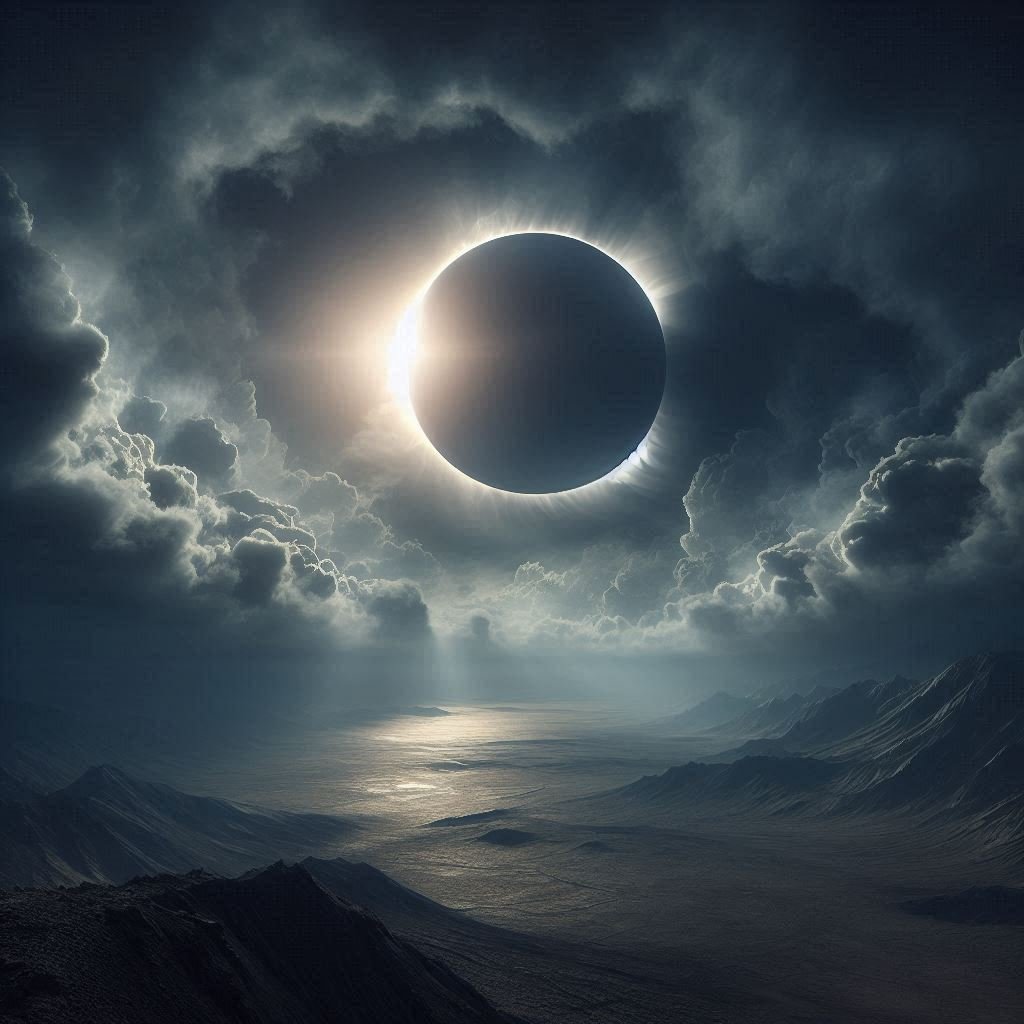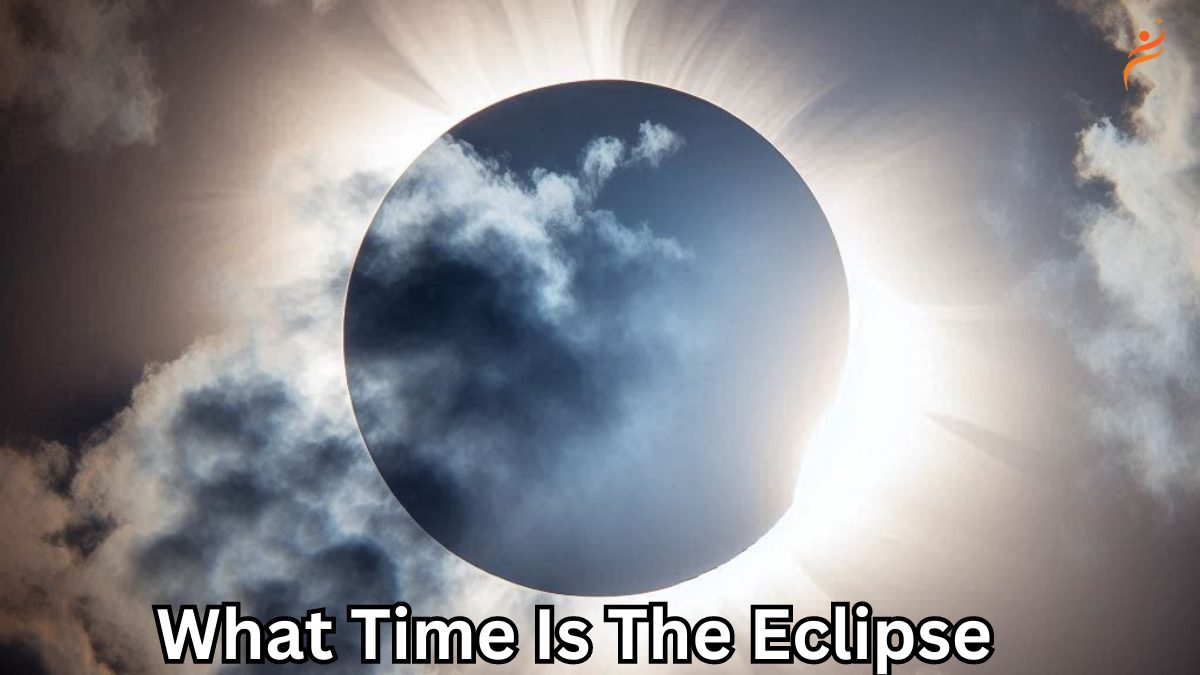Eclipses are among the most fascinating natural phenomena, captivating audiences across the globe with their awe-inspiring beauty. Whether you’re a seasoned astronomer or just someone who enjoys observing the wonders of the night sky, knowing what time is the eclipse is crucial for witnessing these celestial events.
In this comprehensive guide, we will explore the different types of eclipses, how to find out the exact time of upcoming eclipses, and provide answers to some frequently asked questions about viewing solar and lunar eclipses. So, if you’re eager to know what time is the eclipse, keep reading for all the details!

What Is an Eclipse?
An eclipse occurs when one celestial body moves into the shadow of another. The two most common types of eclipses are solar eclipses and lunar eclipses. In a solar eclipse, the Moon moves between the Earth and the Sun, blocking out some or all of the Sun’s light. During a lunar eclipse, the Earth moves between the Sun and the Moon, causing the Earth’s shadow to fall on the Moon.
Types of Solar Eclipses
- Total Solar Eclipse: A total solar eclipse occurs when the Moon completely covers the Sun, casting a shadow on Earth and turning day into night for a brief period. This is the most dramatic type of eclipse.
- Partial Solar Eclipse: A partial solar eclipse happens when only part of the Sun is obscured by the Moon. It’s not as spectacular as a total eclipse, but it still offers an exciting viewing experience.
- Annular Solar Eclipse: In this type of solar eclipse, the Moon is too far from Earth to completely cover the Sun, leaving a “ring of fire” visible around the Moon’s edges.
Types of Lunar Eclipses
- Total Lunar Eclipse: A total lunar eclipse happens when the Earth’s shadow fully covers the Moon, giving it a reddish hue. This is often referred to as a “Blood Moon.”
- Partial Lunar Eclipse: In a partial lunar eclipse, only a portion of the Moon passes through the Earth’s shadow.
- Penumbral Lunar Eclipse: This is the least dramatic type of lunar eclipse, as the Moon only passes through the Earth’s outer shadow, causing a subtle darkening.
What Time Is the Eclipse?
If you’re wondering what time is the eclipse, the answer depends on several factors, including your geographic location, the type of eclipse, and the date. Eclipses are not visible from every part of the world, so it’s important to know where and when the eclipse will occur in your area.
How to Find Out What Time Is the Eclipse?
- Use an Eclipse Calculator: Several online tools and apps, such as NASA’s Eclipse Explorer or Time and Date’s Eclipse Calculator, allow you to input your location and get detailed information about the time and visibility of upcoming eclipses in your area.
- Check Local Astronomy Websites: Many local observatories and astronomy organizations provide detailed information about eclipse timings, including peak viewing times and safety tips.
- Watch News Reports and Alerts: Major solar and lunar eclipses often make the news, especially in regions where they will be highly visible. News outlets frequently report on the time and location of the eclipse.
Upcoming Solar and Lunar Eclipses: Dates and Times
Here are some key upcoming eclipse events and where you can watch them:
- Solar Eclipse: The next solar eclipse is set to occur on April 8, 2024, and will be a total solar eclipse visible across parts of North America. The eclipse will start at 12:38 PM EDT and will reach its peak at 3:00 PM EDT.
- Lunar Eclipse: The next total lunar eclipse will occur on March 14, 2025, and will be visible from many parts of the world, including North and South America, Europe, and Asia. The eclipse will begin at 5:27 AM UTC and reach its peak at 7:54 AM UTC.
To know what time is the eclipse in your specific area, it’s crucial to use an eclipse calculator or check local viewing guides.
How to Safely Watch an Eclipse
While lunar eclipses are safe to watch with the naked eye, solar eclipses require special precautions to protect your eyes. Here’s how to safely enjoy these celestial events:
Viewing a Solar Eclipse
Never look directly at the Sun without proper protection during a solar eclipse, even during a partial or annular eclipse. Staring at the Sun can cause permanent eye damage, including blindness.
- Eclipse Glasses: Use specially designed eclipse glasses that meet ISO 12312-2 international safety standards. These glasses block harmful UV and infrared rays, allowing you to safely watch the Sun.
- Solar Filters for Telescopes: If you’re using a telescope or binoculars, make sure to use solar filters that are designed for direct Sun viewing.
- Pinhole Projector: Another safe method is to create a pinhole projector. This simple tool allows you to project the Sun’s image onto a surface, so you can view the eclipse indirectly.
Viewing a Lunar Eclipse
Lunar eclipses are completely safe to watch without any special equipment. Feel free to observe the Moon with the naked eye, or use binoculars or a telescope to get a closer view of the stunning eclipse.
Why Are Eclipses Important?
Eclipses have fascinated humanity for centuries, inspiring myths, scientific discoveries, and artistic representations. But beyond their aesthetic appeal, eclipses are valuable opportunities for scientific research. Solar eclipses allow astronomers to study the Sun’s outer atmosphere, known as the corona, which is normally too faint to see.
Lunar eclipses, on the other hand, offer insight into the Earth’s atmosphere. During a total lunar eclipse, the Earth’s atmosphere bends sunlight and causes the Moon to turn a reddish color, which can help scientists study how dust and pollution affect the way light is scattered.

FAQs
1. What causes a solar eclipse?
A solar eclipse occurs when the Moon passes between the Earth and the Sun, temporarily blocking out the Sun’s light.
2. What time is the eclipse happening in my area?
To find out what time is the eclipse in your area, you can use an online eclipse calculator or check local astronomy websites for accurate timings.
3. How long does an eclipse last?
The duration of an eclipse varies. Total solar eclipses usually last for a few minutes, while lunar eclipses can last for several hours from start to finish.
4. What is the difference between a solar and lunar eclipse?
A solar eclipse happens when the Moon blocks the Sun’s light from reaching the Earth, while a lunar eclipse occurs when the Earth blocks the Sun’s light from reaching the Moon.
5. Do I need special equipment to watch a lunar eclipse?
No, lunar eclipses are safe to watch with the naked eye. However, a pair of binoculars or a telescope can enhance your viewing experience.
Conclusion
If you’re eager to witness the next celestial event, knowing what time is the eclipse is essential for planning your viewing experience. Whether you’re watching a total solar eclipse or a mesmerizing lunar eclipse, these events are rare opportunities to witness the beauty of the cosmos.
By using eclipse calculators, checking local astronomy guides, and following safety precautions, you can enjoy these events to the fullest. So, mark your calendars for the upcoming eclipses and get ready to be amazed by the wonders of the sky!



